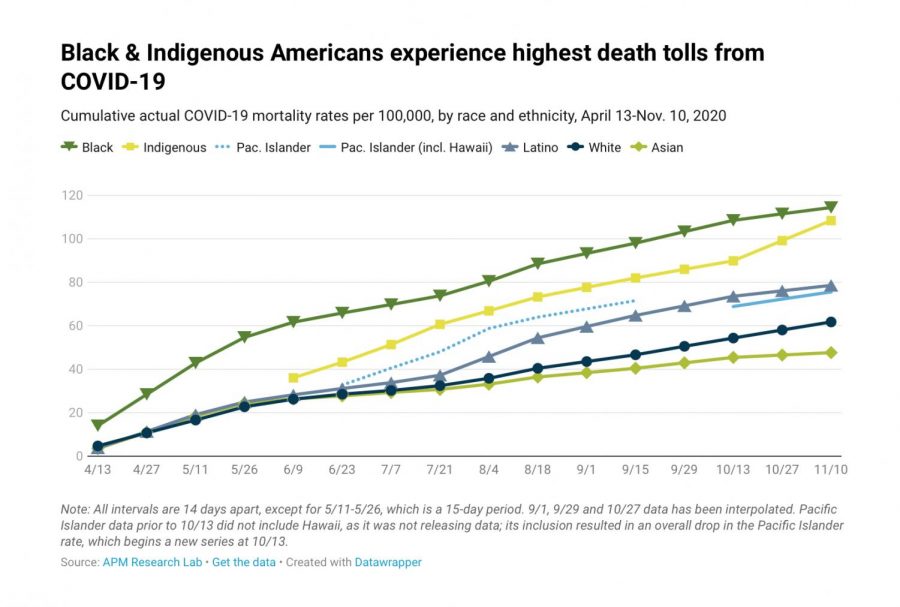COVID-19 risk demographic
The ongoing pandemic has dramatically changed life globally. Adults are working from home and children are learning online. Many stores have temporarily closed or shut down. Many sports have been canceled worldwide. People are constantly wearing masks. However, the most dramatic impact has been the number of lives lost due to this crisis.
1.23 million people have died globally with around 238,000 deaths in the United States alone. If we look closer into the demographics, we can see which groups of people are being hit the hardest. These groups are distinguished by age, income level, and race.
According to the Centers for Disease Control and Prevention (CDC), “The greatest risk for severe illness from COVID-19 is among those aged 85 or older…in fact, 8 out of 10 COVID-19-related deaths reported in the United States have been among adults aged 65 years and older.”
Older people usually have more pre-existing conditions which may cause them to have a much weaker immune system than a typical 30-year-old. In addition, older people more frequently live in assisted living or nursing homes, where more people are living in a smaller area, allowing COVID-19 to spread like wildfire.
Another demographic where COVID-19 can spread easily is low-income families. Many people live in smaller homes and apartments to reduce the amount of money they need to spend.
In addition to the smaller living space, there are other disadvantages for low-income individuals and families. The Human Rights Watch states, “Low-income jobs in fields like retail, hospitality, childcare, and the gig economy (i.e. workers paid per job performed) cannot be performed remotely, and in the US the majority do not offer paid sick leave or health insurance. Research has shown that low income is associated with higher rates of chronic health conditions such as diabetes and heart disease, factors that increase vulnerability to COVID-19.”
One final demographic highlighting which groups of people are targeted by this pandemic is race which oftentimes ties in with the amount of income one receives. People who have low incomes tend to have a more difficult time, especially during a crisis or pandemic. Black and Indigenous Americans statistically have lower incomes than Caucasians.
The APM Research Lab states that “Black and Indigenous Americans have the highest death tolls…If they had died of COVID-19 at the same actual rate as White Americans, about 21,800 Black, 11,400 Latino, 750 Indigenous, and 65 Pacific Islander Americans would still be alive.”
What can we do about these high-risk demographic groups? Although older people are more vulnerable, we can only continue to reduce contact with this population. However, we can address the low-income and race issues. Life is difficult for low-income individuals and families, and blacks and indigenous people. Perhaps we can’t entirely solve their problems, but they don’t deserve to be subjected to higher death rates simply because of their income level or race.
If the United States offered healthcare for all, then more people could get protected from situations like these, and have easier access to healthcare provisions. Also, if we entailed a stimulus check for low-income jobs and families then we could have them work from home to reduce the high percentage of people getting COVID. We could also hold employers accountable for providing appropriate equipment and social distancing. There are so many different things that we, as a nation, need and can do to help those around us be safer than they are now.


